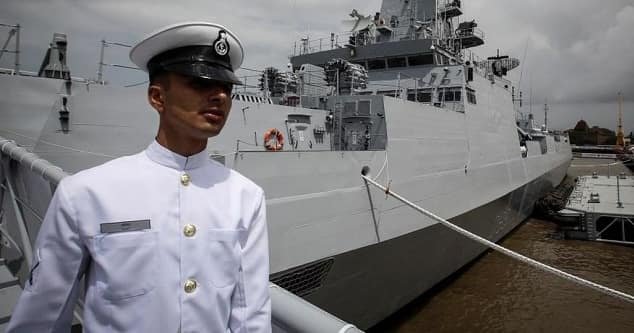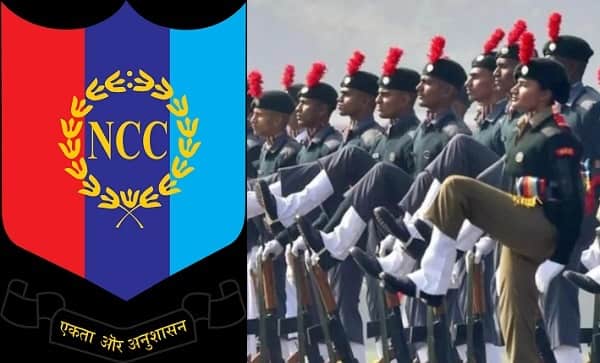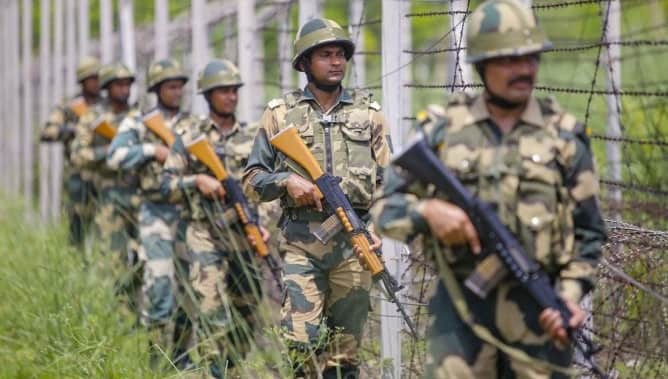Prime Minister Jawaharlal Nehru once quoted, “To be secure on Land, we must be Supreme at Sea”. The quote’s meaning was that India has an extensive coastal line, and it certainly faces a threat on the coastal line. For the people to feel secure in India, it is crucial to have a strong navy. In actuality, the length of the coastline of India is 7500 km of coastline. The EEZ area is over 2 million sq km. in such a case, the coastal line becomes an important asset to protect.
It comes as no surprise that 97% of Indian trade is carried out via sea route. The Indian Navy protects all the vital assets, and it monitors the coastline all around the year. The Navy is responsible for monitoring and protecting the people from threat, but the Navy has also safeguarded the citizens in case of natural disasters. The institute played a pivotal role during the tsunami, cyclones, floods and various other natural disasters. The Navy carries out relief operations with high efficiency levels, which is required when you are on duty to save lives.
The role of a navy officer is undoubtedly very fascinating, and we are sure that you would also love to work as a navy officer. It is a good career option, and you can choose the trade. It offers respect and satisfaction that you can only gain after serving the country. In this article, we have shared information about the career of a navy officer, and we have covered a detailed selection process as well. Go ahead and check out the information now.
Fields as Navy Officer

We know you are interested in joining the Indian Navy as Navy Officer but do you know that there are multiple fields in this trade? In this section, we have listed some details about the fields available for Indian Navy Officers.
- Education – here, the officers are responsible for supervising the training activity of the cadets. They are also responsible for ensuring that the cadets are prepared for wartime.
- Electrical – In this domain, the officers must deal with the computer system, electrical system and communication system. All these are necessary for the smooth running of Navy.
- Engineering – As the name suggests, the officers in the engineering team deals with technology related task. They are often seen upgrading the ships, performing maintenance activities on ships, submarines and air crafts. They are responsible for offshore as well as other activities as well.
- Executive – This domain is one of the most exciting domains. Officers posted in the executive domain are responsible for leading the ships and submarines during wartime.
- Medical – Officers in the Medical field are hired via AFMS. They are responsible for providing medical support to the Indian Navy.
Also Read: How To Join The Indian Navy For girls
Eligibility Criteria for Joining Navy
In this section, we have listed the eligibility criteria associated with the Navy. Check out the details below.
- The candidate should be an Indian Citizen, or the candidate should be a resident of a friendly nation like Nepal or Bhutan. However, the candidate needs to take special permission from the government if he has any other nationality than being Indian.
- The candidate should have completed the basic education. 10+2 for undergraduate entry and B.Tech or other graduation of CDSE.
- The tech candidate should be unmarried men. The criteria vary depending on the level.
- Candidate should have PCM in 10+2, and they should have scored 75% in these subjects. The candidate should have also scored 50% in English.
- The candidate should have good physical health, and he should be free of disease, disability and deformity.
- The candidate should have eyesight under the prescribed standards. This includes the standard with and without glasses.
Selection of a Navy Officer
There are different ways to join Indian Navy. In this section, we have covered all the details that would lead to becoming an officer in the Indian Navy. There are four ways to join Indian Navy as an office, and below are the details.
- UPSC Entries
- Combined Defence Services Exam (CDSE)
- National Defence Academy (Navy or Naval Academy)
- NCC
- Direct Entry for Undergraduate Level – Permanent Commission
- 10+2 – B.Tech
- Direct Entry for Graduate Level – Permanent Commission
- Law
- Music
- Sports
- Indian Navy Entrance Test – SSC or Permanent Commission
- Air Traffic Controller
- Education
- Hydro
- General Services Executive
- General Services Executive – Electrical Engineer
- IT
- Logistics
- Naval Architect
- Naval Armament Inspectorate Cadre
- Observer
- Pilot
You have read about the way of entrance, now check about the exams and other such details. You need to clear the exam, physical health check and personal interaction to work as Navy Officer.
- NDA – This entry method is controlled by UPSC, and it has a written exam followed by the interview. Once you clear the interview, you go through the medical test, and the merit list is then released. The appointment letter is released, and the training officers are asked to report to the academy in Jan or July. The advertisement for the exam is published in June or December. And the exam is conducted in August and January every year.
- CDSE – Just like NDA, the CDSE exam is held for graduate-level candidates. This test is conducted in February and October every year. The advertisement is published in November and July every year. The joining after this exam happens in January and July of the coming year. If the candidate clears CDSE, the SSB interview is conducted along with the medical test.
- NCC – A lot of candidates also get a role through NCC. Along with the CDSE exam advertisement, the vacancies for Naval Wing Senior Division NCC C certificate holder are notified. This can be taken by the B.Tech or B.E. pass outs. The advantage of this method is that the student doesn’t have to go through the Written Exam. The candidate needs to go through SSB Interview and medical test only.
- Direct Entry Undergraduate – For this, the candidate who has scored 70% in PCM and 50% in English in 10+2 is eligible to apply. The candidate must provide JEE rank, and the opening for this level is published in the employment newspaper. The candidate is taught the curriculum of B.Tech in this mode of entry.
- Direct Entry Graduate – The advertisement is published in the employment newspaper for direct entry. The application is open for Permanent as well as Short Service Commission. Moreover, the candidates interested in law, music or sports are inducted via this method. The prelim scan is conducted for these candidates, and then the candidates go through SSB Interview. After the medical exam, the Navy can hire the candidate.
- INET – Indian Navy Entrance Test helps you get inducted on roles of Navy Officer in Permanent Commission and SSC. The exam is conducted twice a year. People who clear the INET exam needs to go through an SSB interview. After the interview, the candidate can go through a medical test, and the candidate gets inducted if he clears everything.
You should note that the SSB Test happens in two stages. During the first stage, intelligence and perception are tested. The second stage is a psychological test along with the group discussion and interview.
Also Read: Merchant Navy Courses In India: Eligibility, Careers, Scope & Salary
Training Center for Navy Officers
For the navy officers, the training centre is the Indian Naval Academy. It is located in Ezhimala in Kannur. Kannur is located in Kerala, and it touches the Arabian Sea. The training for officers is held in this academy, and this training facility is enormous. The training is formulated in such a way that the officer is moulded and given the right skillsets as well as attitude. The training helps in developing mental alertness, physical strength, good moral and technical awareness. The officers are taught to be creative, and they are made resourceful when they are working for the Indian Navy.
Pay Scale of a Navy Officer
No matter what job you do, the pay scale would remain to be necessary. After all, you need to pay your bills. In the table below, we have listed the pay scale of the navy officers. The scale would depend on your level, so go ahead and check out the information now.
| Rank | Level | Pay Band | MSP |
| Sub Lieutenant | 10 | Rs 56100 to Rs 177500 | Rs 15500 |
| Lieutenant | 10B | Rs 61300 to Rs 193900 | Rs 15500 |
| Lieutenant Commander | 11 | Rs 69400 to Rs 207200 | Rs 15500 |
| Commander | 12A | Rs 121200 to Rs 212400 | Rs 15500 |
| Captain | 13 | Rs 130600 to Rs 215900 | Rs 15500 |
| Commodore | 13A | Rs 139600 to Rs 217600 | Rs 15500 |
| Rear Admiral | 14 | Rs 144200 to Rs 218200 | NA |
| Vice Admiral | 15 | Rs 182200 to Rs 224100 | NA |
| Vice Admiral & Equivalent | 16 | Rs 205400 to Rs 224400 | NA |
| DGAFMS | 17 | Rs 225000 | NA |
| VCNS/C-in-C Equivalent | 17 | Rs 225000 | NA |
| CNS & Equivalent | 18 | Rs 225000 | NA |
Major Allowance for a Navy Officer
Apart from the pay, you also get many allowances when you are serving the country as a navy officer. In the table below, you can check out the different allowance that you will be getting.
| Allowance | Eligibility | Rate per Month |
| Flying | Qualified Pilot or Observer | Rs 25000 |
| Submarine | Qualified Submariner | Rs 25000 |
| Macro | Qualified Macro | Rs 25000 |
| Diver | Any Ship Diver | Rs 900 |
| Sea Going | Sailing Naval Officers | Rs 10500 |
| Technical | Technical Officers | Rs 3000 to Rs 4500 |
| Instructional | Officers Posted as Instructor | Data not Available |
| Hard Area | Officers posted in the hard area (as per govt.) | 20% of Basic Pay |
| Uniform | All Officers | Data not Available |
| House Rent | In case of non-availability of government accommodation | 8%, 16% or 24% of Basic pay |
| Transport | all officers | Rs 3600 or Rs 7200 (+DA Thereon) |
Benefits of Becoming a Navy Officer
There are also many benefits associated with serving as a navy officer. In this section, we have highlighted some of those benefits. Looking at this benefit will help you in understanding how rewarding the role of a navy officer is. Check out the details below.
- You are entitled to group insurance. This insurance is offered at a very low premium. The cover for the pilot, observer or submariner is Rs 57 Lakhs, whereas it is Rs 50 lakhs for all other officers.
- The navy officer is also entitled to leave concessions. In a year, the officer gets 60 days of annual leave and 20 days of casual leave. If you cannot fully utilize the leaves, then do not worry, as you can accumulate 30 days of leave in a year. You can encash the accumulated leave at the time of retirement.
- The navy officer also gets a free rail or air ticket during the leave. The concession is also extended to the family of a navy officer. The officer can travel with five other members of his family if he is travelling via train.
- The navy officer is entitled to a pension after retirement. In case of any unfortunate event as the death of a navy officer, the officer’s wife continues to receive the pension. The medical cover is offered for a lifetime. Lastly, the gratuity is paid to the officers who served in short service.
Final Verdict
This was all about becoming a navy officer in India. You can go through the details of the selection procedure and choose the path according to your level. You can also visit the Indian Navy website to learn more about the different aspects of becoming a navy officer. It has detailed medical & physical standards along with the details of the benefits that you will get for serving the country as a navy officer. If you need any other information, you can also leave a comment below, and we will try to get back to you as soon as possible.

Rahul Kumar is a passionate educator, writer, and subject matter expert in the field of education and professional development. As an author on CoursesXpert, Rahul Kumar’s articles cover a wide range of topics, from various courses, educational and career guidance.



